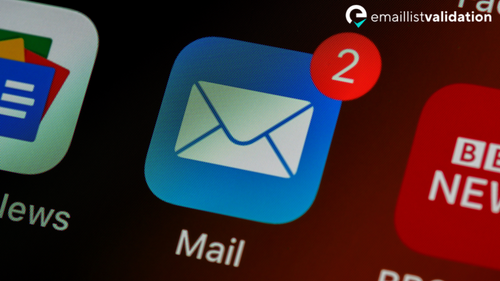Email marketing is a powerful tool for businesses to reach out to their customers and prospects. However, it's not enough to just send out emails and hope for the best. You need to make sure that your emails are actually reaching their intended recipients. One way to do this is by performing an email bounce check.
What is an email bounce?
An email bounce occurs when an email is returned to the sender because it was undeliverable. There are two types of bounces: hard bounces and soft bounces.
A hard bounce occurs when an email is returned to the sender because the recipient's email address is invalid or doesn't exist. This could be because the email address was mistyped, the domain name doesn't exist, or the email account has been closed.
A soft bounce occurs when an email is returned to the sender because the recipient's email server is temporarily unavailable. This could be because the recipient's mailbox is full, the email server is down, or the email is too large to be delivered.
Why is an email bounce check important?
Performing an email bounce check is important for several reasons:
1. It helps you maintain a clean email list. By removing invalid email addresses, you can improve your email deliverability and avoid being marked as spam.
2. It saves you time and money. Sending emails to invalid email addresses is a waste of time and resources. By removing these addresses from your list, you can focus on reaching out to your actual customers and prospects.
3. It improves your email reputation. Email service providers (ESPs) like Gmail and Yahoo! Mail use complex algorithms to determine whether an email is spam or not. If you have a high bounce rate, your emails are more likely to be marked as spam and sent to the junk folder.
How to perform an email bounce check
There are several tools available that can help you perform an email bounce check. Here are a few options:
1. NeverBounce: NeverBounce is a popular email verification service that can help you verify your email list and remove invalid email addresses. They offer a free trial and pricing plans based on the number of emails you need to verify.
2. ZeroBounce: ZeroBounce is another email verification service that can help you validate your email list and improve your email deliverability. They offer a free trial and pricing plans based on the number of emails you need to verify.
3. Proofy: Proofy is an email verification tool that can help you verify your email list and remove invalid email addresses. They offer a free trial and pricing plans based on the number of emails you need to verify.
When using an email bounce check tool, you'll need to upload your email list and wait for the tool to verify each email address. Once the verification is complete, the tool will provide you with a list of valid and invalid email addresses.
Frequently Asked Questions
1. How often should I perform an email bounce check?
It's a good idea to perform an email bounce check on a regular basis, such as once a month or once a quarter. This will help you maintain a clean email list and improve your email deliverability.
2. What is a good bounce rate?
A good bounce rate is typically less than 2%. If your bounce rate is higher than this, you may need to perform an email bounce check and remove invalid email addresses from your list.
3. Can I manually check for email bounces?
Yes, you can manually check for email bounces by sending a test email to each email address on your list and monitoring the bouncebacks. However, this can be time-consuming and may not be practical for larger email lists.
Conclusion
Performing an email bounce check is an important step in maintaining a clean email list and improving your email deliverability. By using an email verification tool, you can quickly and easily remove invalid email addresses from your list and focus on reaching out to your actual customers and prospects.



